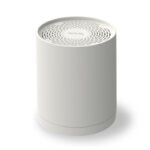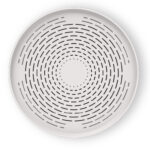Indoor training is a good habit but only if there is good air quality

Benefits of physical activity

Exercise is one of the best things we can do to stay healthy.
Engaging in regular physical activity promotes a healthy lifestyle with significant benefits to people’s health.
Regular physical activity, even moderate physical activity, contributes to a better quality of life as it positively affects both health status by helping to prevent and alleviate many of the chronic diseases, and the degree of personal satisfaction by helping to develop social relationships and aiding mental well-being.
Benefits include increased serotonin and endorphin production, benefits on the immune system, and cortisol and blood sugar control.
Inactive people are more likely to develop diseases than people who are physically active.
However, when air quality is poor, exercise can pose quite a few risks to our health
.
Paying more attention to what we breathe

When we start an exercise program or a sport in general we start paying more attention to how we treat our bodies by watching what we eat, drinking more water and trying to get more sleep. Avoiding exposure to air pollution may not be on that list yet but it should be.
We inhale about 12 thousand liters of air daily, and just as we monitor and care about the quality of the food and drink we put into our bodies, attention should be just as pronounced to the air we breathe.
Even if we follow all the possible measures such as ventilating the room by opening the windows, we have no assurance of protecting our health since the air in our homes is constantly combined with the air outside. So a routine gesture like this may not always be as beneficial as we tend to think.
The causes of polluted air in our homes

Outdoor air pollution is largely caused by emissions , both from vehicles and industrial sources. Smoke from fires can also contribute to poor outdoor air quality. Pollutants from these sources can consist of both particulate matter and gases.
On rainy days or when the weather is too muggy, we often choose to move our training indoors.
However, indoor air quality is up to 10 times worse than outdoor air quality. In addition to the outdoor pollutants that take over indoors, we must also consider those already present indoors that come from multiple sources including open fires, outgassing from furniture and building materials, household cleaning and maintenance products, secondhand smoke, food cooking, cooling systems, and allergens such as dust, pet dander, and mold spores.
According to the Environmental Protection Agency, the U.S. federal government agency responsible for protecting human health and the environment, potential indoor pollutants include radon gas, particulate matter, volatile organic compounds, carbon dioxide, formaldehyde, asbestos and carbon monoxide.
How poor air quality can affect breathing during exercise

During physical activity we inhale deeper and faster, bringing more air into our lungs than when we are at rest.
If we exercise in an environment with poor air quality, this may also mean that we are breathing in pollutants at a faster rate.
In addition, we must consider that most people tend to breathe through their mouths when exercising. While the nose can filter out some of the larger pollutant particles before they reach the lungs, the mouth cannot.
These two factors can lead to increased levels of pollutants entering the airways when exercising in an area with low air quality, both indoors and outdoors.
The balance between training and exposure to pollutants

Health problems associated with inhaling unhealthy air include headaches, skin irritation, respiratory tract damage, increased risk of developing asthma or worsening it if it is already an existing condition, to increased risk of heart attacks, strokes, and death from lung cancer or cardiovascular disease.
It is worth noting, however, that the risks of sedentary-related diseases are significantly worse than those derived from outdoor physical activity when the air is polluted.
Case studies also suggest that the benefits of exercise (for most people) outweigh the risks associated with breathing polluted air.
That said, we should still pay attention to the air quality of the spaces in which we exercise.
The American College of Sports Medicine, a major membership organization for sports medicine and exercise science based in America, recommends finding a balance between maintaining a healthy level of physical activity and reducing exposure to air pollutants.







